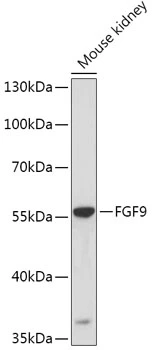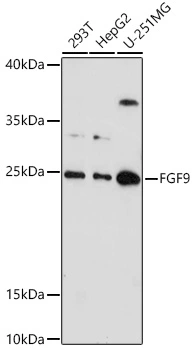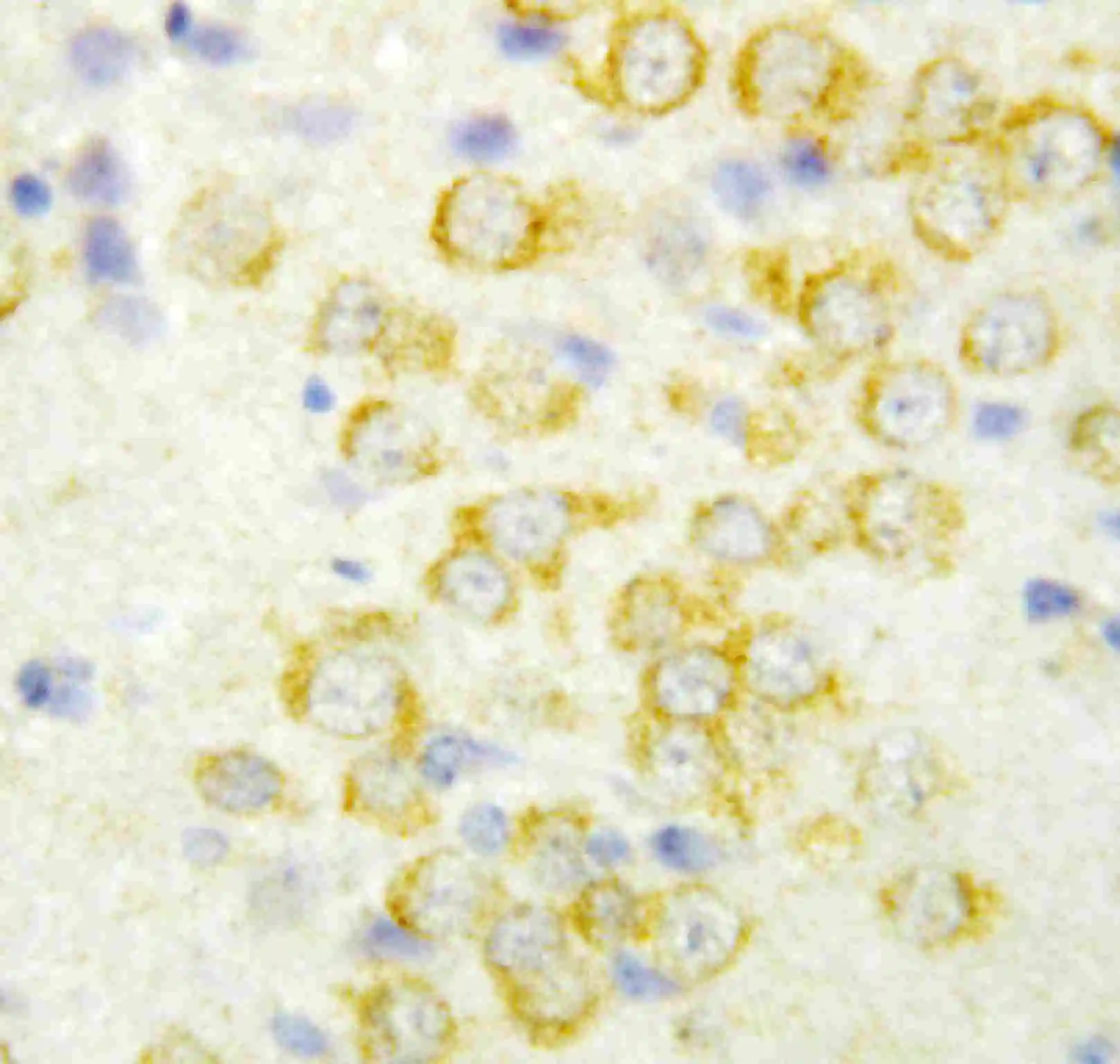
WB analysis of mouse kidney tissue lysate using GTX55621 FGF9 antibody. Dilution : 1:1000 Loading : 25microg per lane
FGF9 antibody
GTX55621
ApplicationsWestern Blot
Product group Antibodies
TargetFGF9
Overview
- SupplierGeneTex
- Product NameFGF9 antibody
- Delivery Days Customer9
- Application Supplier NoteWB: 1:500 - 1:2000. *Optimal dilutions/concentrations should be determined by the researcher.Not tested in other applications.
- ApplicationsWestern Blot
- CertificationResearch Use Only
- ClonalityPolyclonal
- ConjugateUnconjugated
- Gene ID2254
- Target nameFGF9
- Target descriptionfibroblast growth factor 9
- Target synonymsFGF-9, GAF, HBFG-9, HBGF-9, SYNS3, fibroblast growth factor 9, fibroblast growth factor 9 (glia-activating factor), heparin-binding growth factor 9
- HostRabbit
- IsotypeIgG
- Protein IDP31371
- Protein NameFibroblast growth factor 9
- Scientific DescriptionThe protein encoded by this gene is a member of the fibroblast growth factor (FGF) family. FGF family members possess broad mitogenic and cell survival activities, and are involved in a variety of biological processes, including embryonic development, cell growth, morphogenesis, tissue repair, tumor growth and invasion. This protein was isolated as a secreted factor that exhibits a growth-stimulating effect on cultured glial cells. In nervous system, this protein is produced mainly by neurons and may be important for glial cell development. Expression of the mouse homolog of this gene was found to be dependent on Sonic hedgehog (Shh) signaling. Mice lacking the homolog gene displayed a male-to-female sex reversal phenotype, which suggested a role in testicular embryogenesis. [provided by RefSeq, Jul 2008]
- Storage Instruction-20°C or -80°C,2°C to 8°C
- UNSPSC12352203






